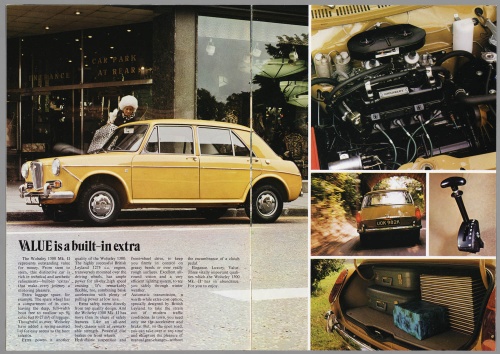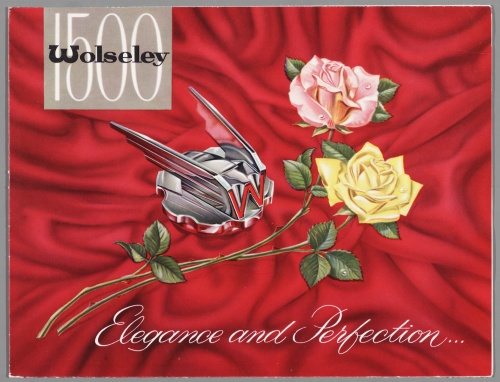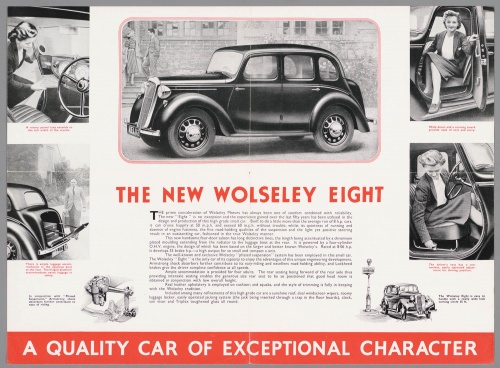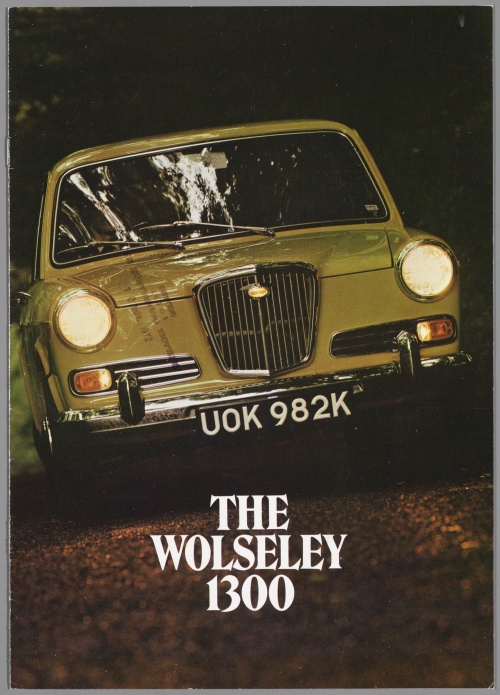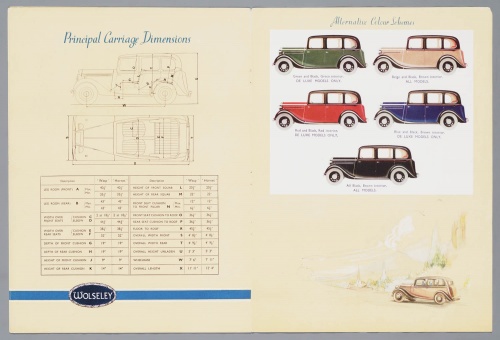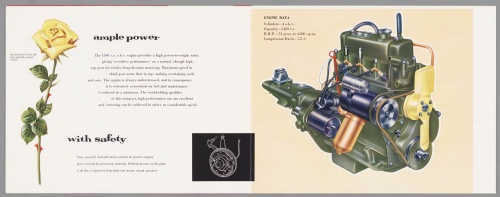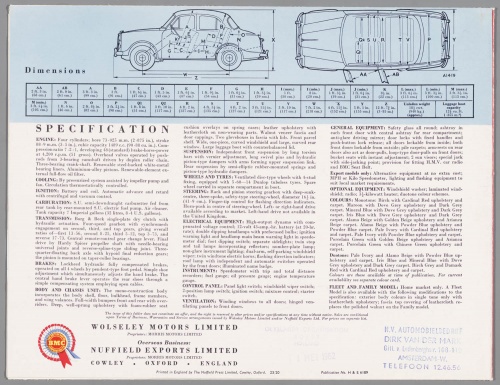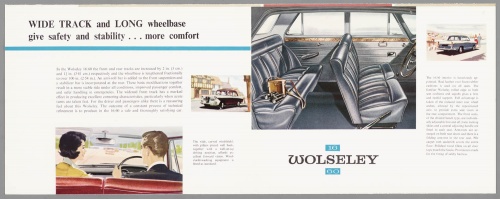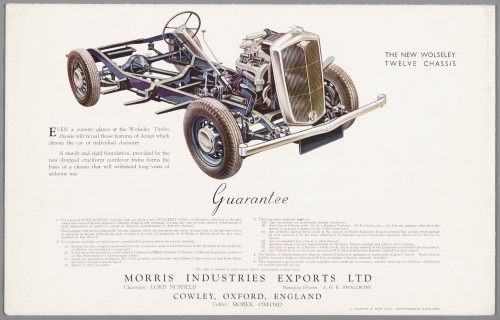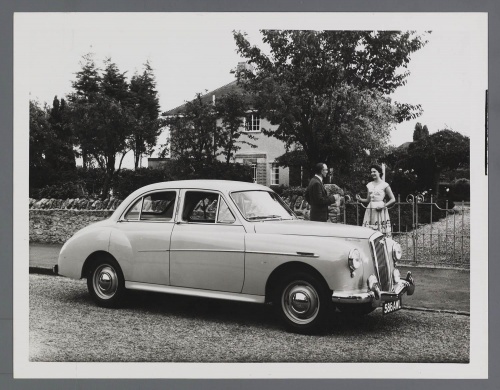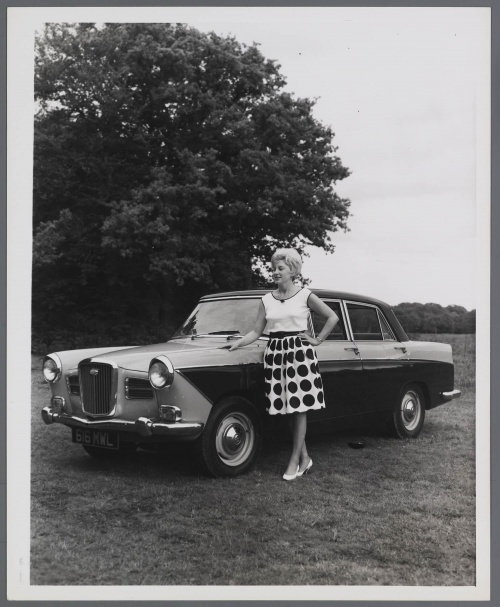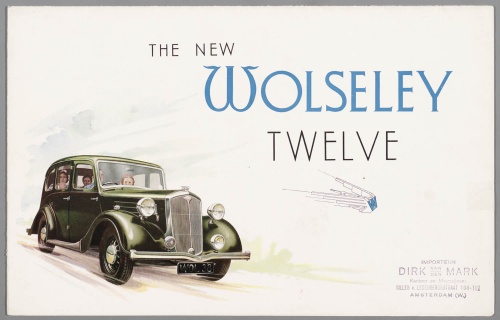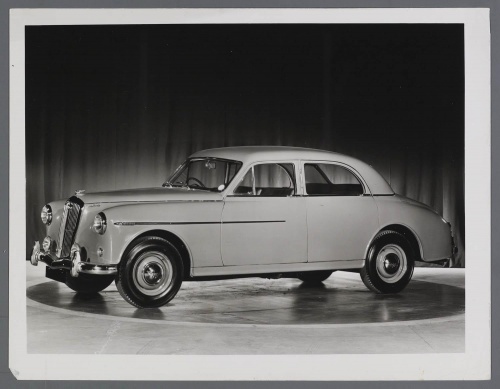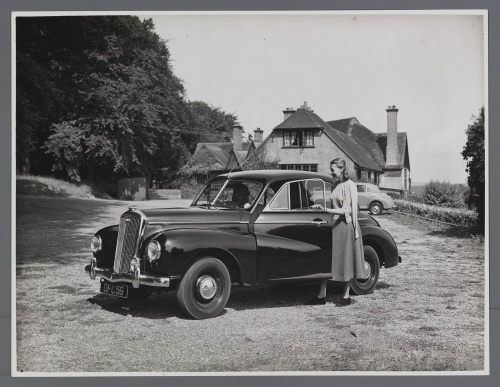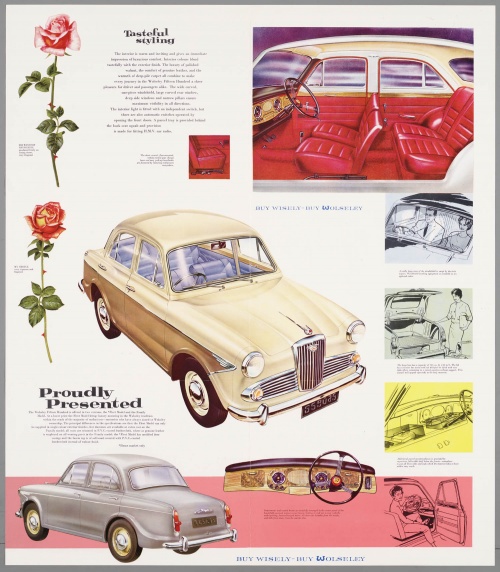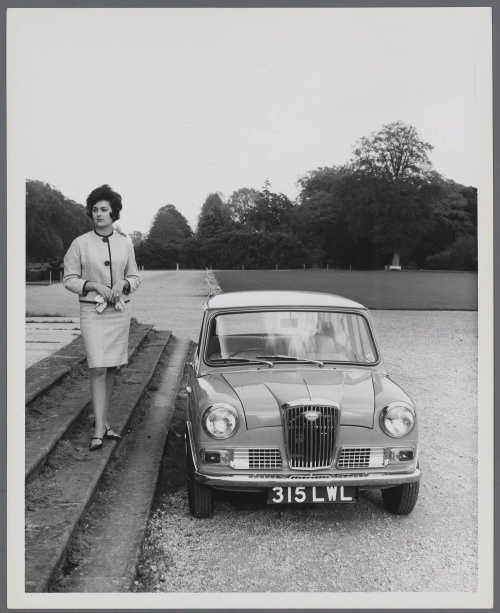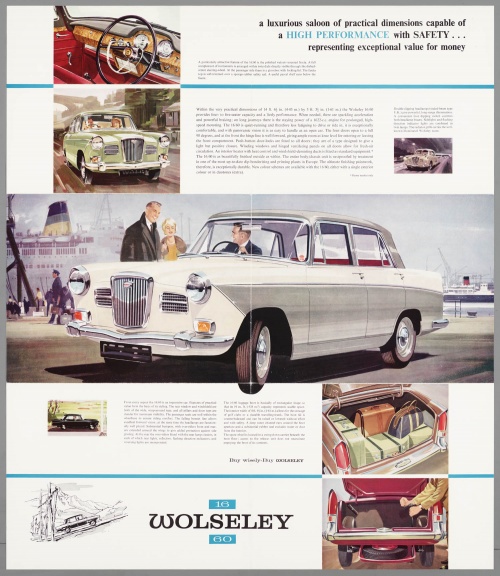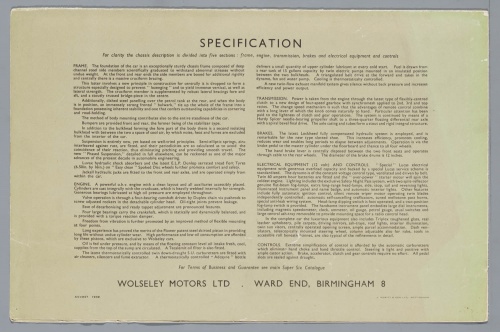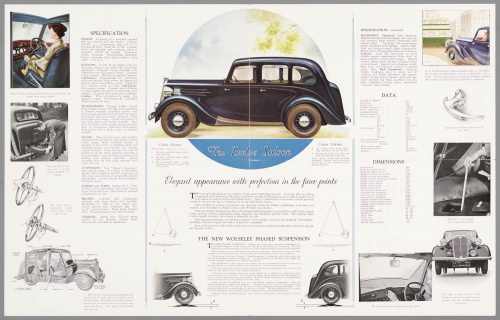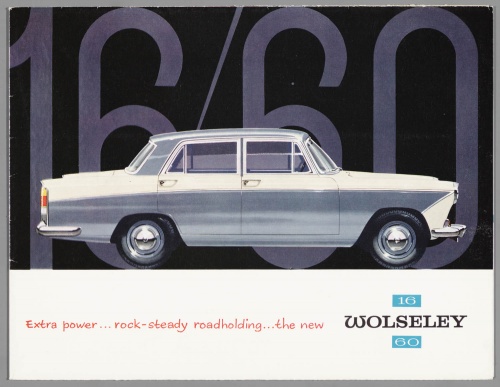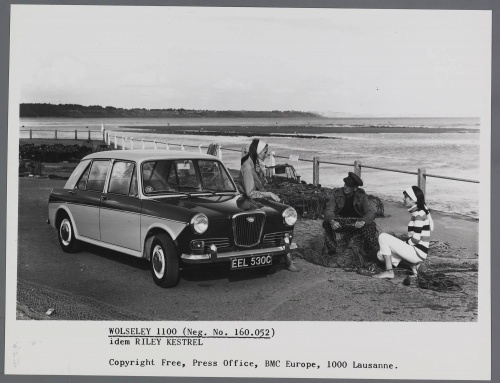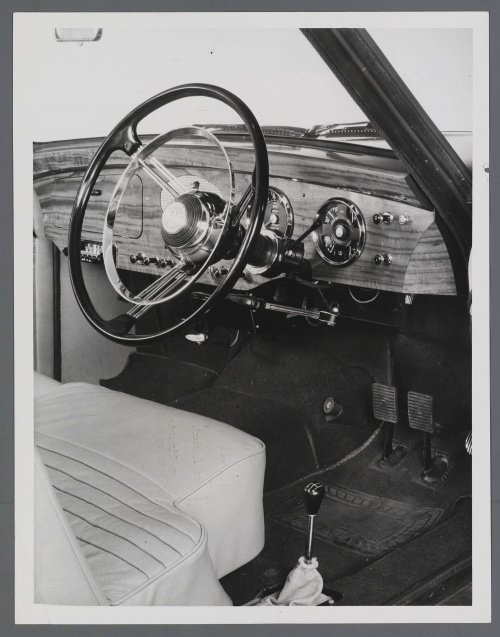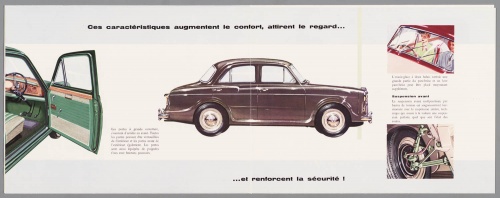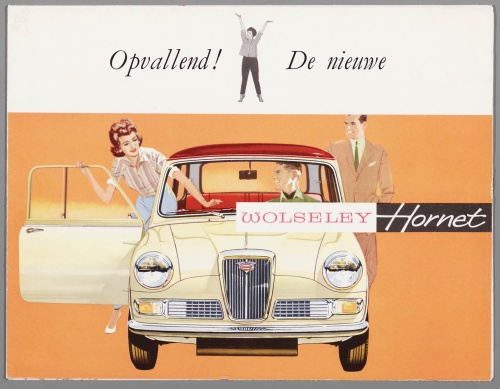Dutch Automotive History (part 63) Wolseley, Hupmobile, Hillman (160 photos)
Wolseley (Birmingham/Cowley, UK, 1896-1976)
The famous automobile designer Herbert Austin at the beginning of his career worked as a technician at the Australian company Wolseley Sheep Shearing Company, which produced sheep shearing machines. Having become the director of the English subsidiary of Wolseley, in 1895 he set about creating a three-wheeled carriage - a copy of the French car of Leon Bollee with a single-cylinder engine with a displacement of 1.3 liters. At the end of 1896, a new three-wheeled vehicle appeared, designated "Wolseley Number 1".
In March 1900, the Vickers Company acquired the Wolseley automobile manufacturing division, retaining Austin's seat on the board of directors. The first 4-wheeled Wolseley cars in 1901 were the 5HP with a single-cylinder engine with a displacement of 1296 cm3 and the 10HP with a 2-cylinder engine with a displacement of 2593 cm3. Both power units had a horizontal cylinder arrangement. In 1905, John Davenport Siddeley, who owned a small automobile company and was engaged in the import of French Peugeot cars, became the director of the company. He proposed replacing the archaic engine models with his own Siddley engines with a vertical cylinder arrangement. Herbert Austin could not agree with this and left Wolseley, soon founding his own automobile company.
New cars were produced under the Wolseley-Siddley brand until 1910. The program included models with 2-, 4- and 6-cylinder engines (ranging from a compact 2-cylinder 1.6-liter engine for the 8HP model to a powerful 4-cylinder unit with a displacement of 15.7 liters). The most popular model since 1911 was the Wolseley 16/20HP, or Stellite, with a 3-liter 4-cylinder engine and a wooden frame. In 1912, according to the design of the Russian inventor Pyotr Shilovsky, an unusual two-wheeled carriage “Gyrocar” with a gyroscopic stabilizer was manufactured. During the First World War, Wolseley produced Hispano-Suiza V8 aircraft engines under license.
The first post-war developments were the “10HP” with a 4-cylinder engine of 1260 cm3, which replaced the “Stellite”, and variants created shortly before the war and equipped with engines with a displacement of 3.1-6.9 liters. In 1921, the “15HP” model appeared, in which the 2.6-liter engine was equipped with an overhead camshaft. In 1925, the 10HP model gave way to the Wolsley-11/22HP car, and the more expensive 15HP was replaced by the Wolsley-16/35HP with the same engine, but with side valves. Two years later, the “16/45HP” model appeared with a 6-cylinder engine with an overhead camshaft.
In 1927, the Wolseley company went bankrupt and was acquired by the Morris company. Soon, Wolseley engines with overhead camshafts appeared on Morris and MG cars. At the same time, the Wolsley department produced more comfortable cars. The first of them in 1928 were the Wolseley-12/32HP with a 4-cylinder 1.5-liter engine and the 21/60HP with an 8-cylinder engine of 2681 cm3. In 1929, the Wolseley-21/60NR appeared with a 6-cylinder power unit, which became the predecessor of the famous Morris Isis. At the same time, production of the expensive model “32/80НР” with an 8-cylinder engine with a displacement of 4022 cm3 began, but it was soon excluded from the program. In 1930, Wolseley introduced the now popular Hornet light sports car, with a 1271cc overhead camshaft engine and hydraulic brakes.
In 1931, the Viper appeared with a 6-cylinder engine of 2025 cm3. After some time, the Hornet Special entered the market with an engine displacement of 1378 cm3, and then with a 6-cylinder engine of 1604 cm3 from the popular Wolseley-14NR sedan. Despite the use of two carburetors and light alloy connecting rods, its power was only 2 hp. more than the 48 hp production version. In 1936, the more expensive overhead camshaft engines had to be replaced with overhead valve engines with a lower shaft. The new generation cars also included representatives of the Super Six series with engines of 1818 and 2322 cm3. The most powerful Wolseley-18HP with a 3-liter engine was a success with the London police. In 1939, the program included 5 models with 6-cylinder engines with a displacement from 2062 to 3485 cm3. A year before the outbreak of the Second World War, the firms Morris and Wolseley became part of the Nuffield group, of which MG and Riley were also members.
After peace came, Wolseley continued to produce pre-war models. In 1946, a new product was the lightweight Wolseley-8HP, which differed from the old E-series Morris-8HP only in its overhead valve engine. In 1949, the Wolseley plant's equipment was moved from Birmingham to the Morris premises in Cowley. The cars produced there were almost completely unified with the Mor
rice" and differed only in details and level of equipment. Released in 1948, "Wolseley-4/50" and "6/80" turned out to be similar to the "Morris Oxford" and "Six" models with 4- and 6- cylinder engines with overhead camshafts. In 1952, the Naffield group merged with the Austin company to form the British Motor Corporation, abbreviated as BMC. Since then, all Wolseley models have become only more comfortable and powerful versions of cars from other brands of the concern.
The Wolseley 4/44 sedan, which appeared in 1952, received an engine from the sports MG TD series. Model "6/90" was born in 1955. It had a Riley Pathfinder chassis with a 2.6-liter Austin engine. Launched in 1958, the Wolseley 1500 was a slightly larger Morris Minor. The legendary Morris Mini has been produced since 1961 as the Wolsley Hornet. Unlike the original, it was equipped with a three-volume body and a more impressive front fascia. In the 60s, under the Wolseley brand, more comfortable versions of the standard small-capacity Navy cars of the 1100 and 1300 series were offered. Since 1967, Wolseley-18/85 from the 1800 standard series was also produced. In 1972, a comfortable front-wheel drive sedan "Wolseley-2200" from the "2200" series appeared. In 1975, the Wolseley program was reduced to a trickle. The brand ceased to exist after the name of the Wolseley 1300 was changed to Princess.
Hupmobile (Detroit/Cleveland, USA, 1908-1940)
The first machine of this brand was developed by Robert S. Hupp with the support of E. A. Nelson. It was a lightweight car with a 2.8-liter engine and 2-speed transmission that was priced at $750 and was intended to be a strong competitor to the popular Ford T. The first Hapmobil became a great success in the shortest possible time, and when 12 thousand copies were sold, the company's share in its market sector reached 7.5%.
In 1911, Bobby Hupp left his firm and founded RCH. In the same year, Hapmobil-20 began to be equipped with a 3-speed gearbox. With some changes, this car was produced until 1925, until it was replaced by the A-1 model with a 6-cylinder 3.2-liter engine. Then the E-1 model appeared, which became the first American car with an 8-cylinder engine producing 70 hp. and brakes on all wheels with hydraulic drive. During the economic crisis, annual sales of Hapmobil decreased from 50 to 18 thousand. The company developed a radical plan to overcome the crisis by completely modernizing the design and appearance of all cars, for which the famous stylist Raymond Loewy was invited. This made it possible to introduce the new Century series with an aerodynamic and fashionable body, equipped with a characteristic three-piece windshield and a rich set of additional equipment. The company's bold and unrealized plans included a front-wheel drive car project.
In 1936, the Hapmobil program again had to be greatly reduced. Only models with 6- and 8-cylinder engines of 4-5 liters remained. In the summer of 1936, the company was closed for several months, and when production resumed, the transmissions of the most powerful cars had an overdrive transmission with automatic activation. The last Hupmobile appeared in 1939. It was a Skylark with rear-wheel drive and a body from the legendary Cord 810/812. The following year the company ceased operations.
Hillman (Coventry/Lynwood, UK, 1907-1976)
After William Hillman had been manufacturing bicycles for a long time, he decided to try his luck in the automotive field. The debut of the first model, which was to compete in the Tourist Trophy race in 1907, was held with great fanfare, as Hillman entrusted its development to the famous naval engineer Louis Cotalen. But soon he went to work for the Sunbeam company, and Hillman had to independently develop a range of cars for his company. In 1909, he introduced the first model “12/16HP”, but the truly successful one was the light car “9HP” with a 4-cylinder engine with a displacement of 1357 cm3, produced until the mid-20s.
In 1926, the 14HP model appeared, and two years later, Hillman became the property of the Rootes brothers, who created their own automobile concern. Introduced in 1931, the comfortable “Wizard” appeared at the height of the economic crisis and was not in demand, but a year later the company tried to straighten things out by releasing a very successful economical model “Minx” with an engine of 1185 cm3. In 1933, it was completely redesigned by the famous designer A. G. Booth, who had previously collaborated with Clyno and AJS. Based on the updated Minx, he created an attractive 2-door sedan Aero Minx with a sporty style. In 1935
The Minx was the first British small car with a 4-speed fully synchronized gearbox. One of the most famous models at that time was the solid Hawk with a 6-cylinder engine, produced until 1939.
The popular "Minx" found a worthy successor in 1949, receiving a new, so-called pontoon body without protruding wings. The following year, the displacement of its engine was increased to 1265 cm3, but the side valves remained until 1955, like the second base engine of 1390 cm3. Periodically updated, Minx remained in production until 1970, and during this time its engine “grew” to 1725 cm3.
In the early 60s, Hillman built a new plant in Lynnwood, Scotland, where from 1963 they began to produce a very interesting lightweight and compact car, the Imp, with a rear-mounted 4-cylinder overhead valve engine of 875 cm3, manufactured by entirely made of aluminum alloy by Coventry-Climax, and independent suspension on all wheels. Despite numerous technical delights and original appearance, demand for the Imp was lower than planned, which is why Hillman found itself in a difficult financial situation.
In 1964, most of the shares of Hillman, which were in the hands of the Rute concern, were transferred to the American corporation Chrysler. During this difficult time, a car with a unique appearance was born - the Avenger, equipped with an engine with a displacement of 1294 cm3 and becoming a replacement for the once popular Minx. The Avenger was manufactured until 1978, but for the last two years it was already under the Chrysler brand, since since 1976 the Hillman brand no longer existed. But the Chrysler concern did not remain the owner for long: two years later, the former Hillman plant was bought by the British branch of the French Peugeot-Citroen group.
